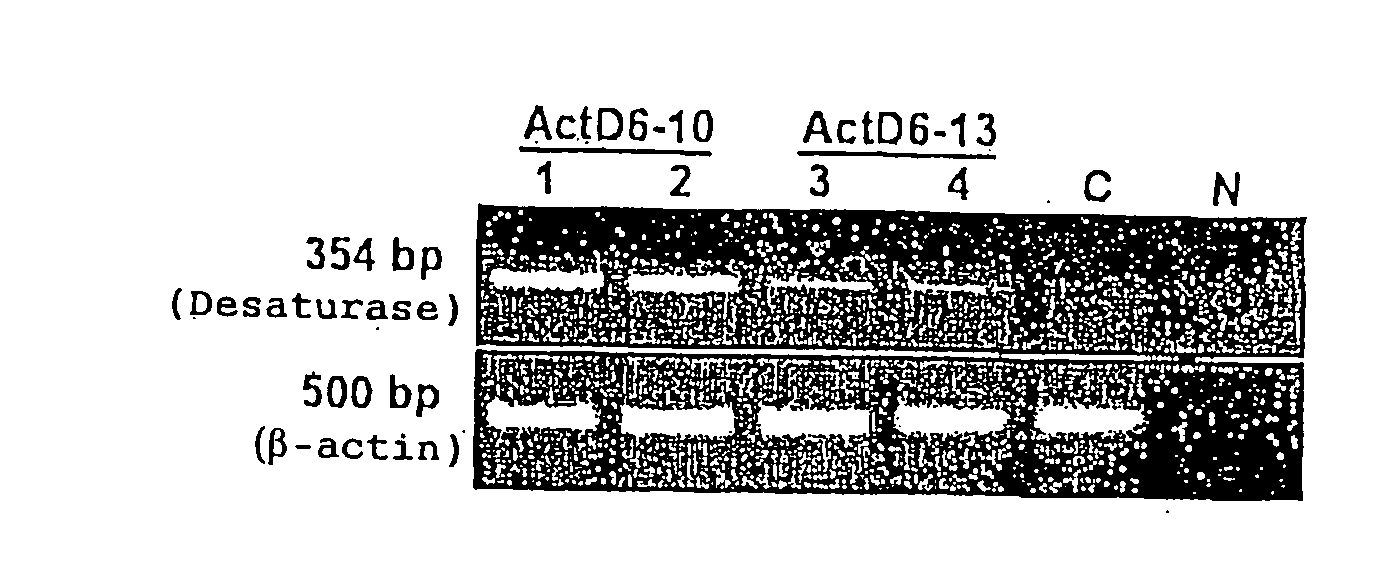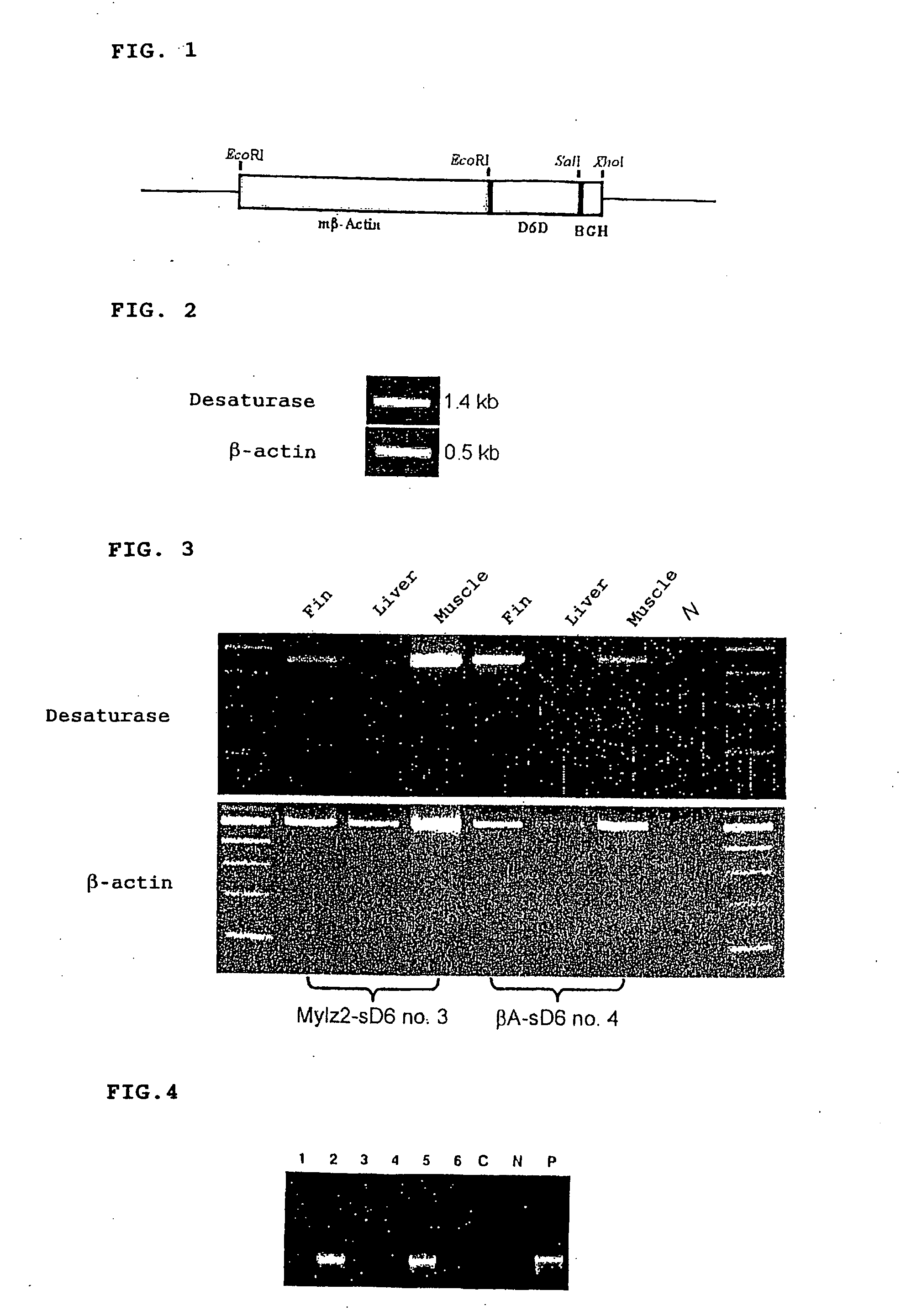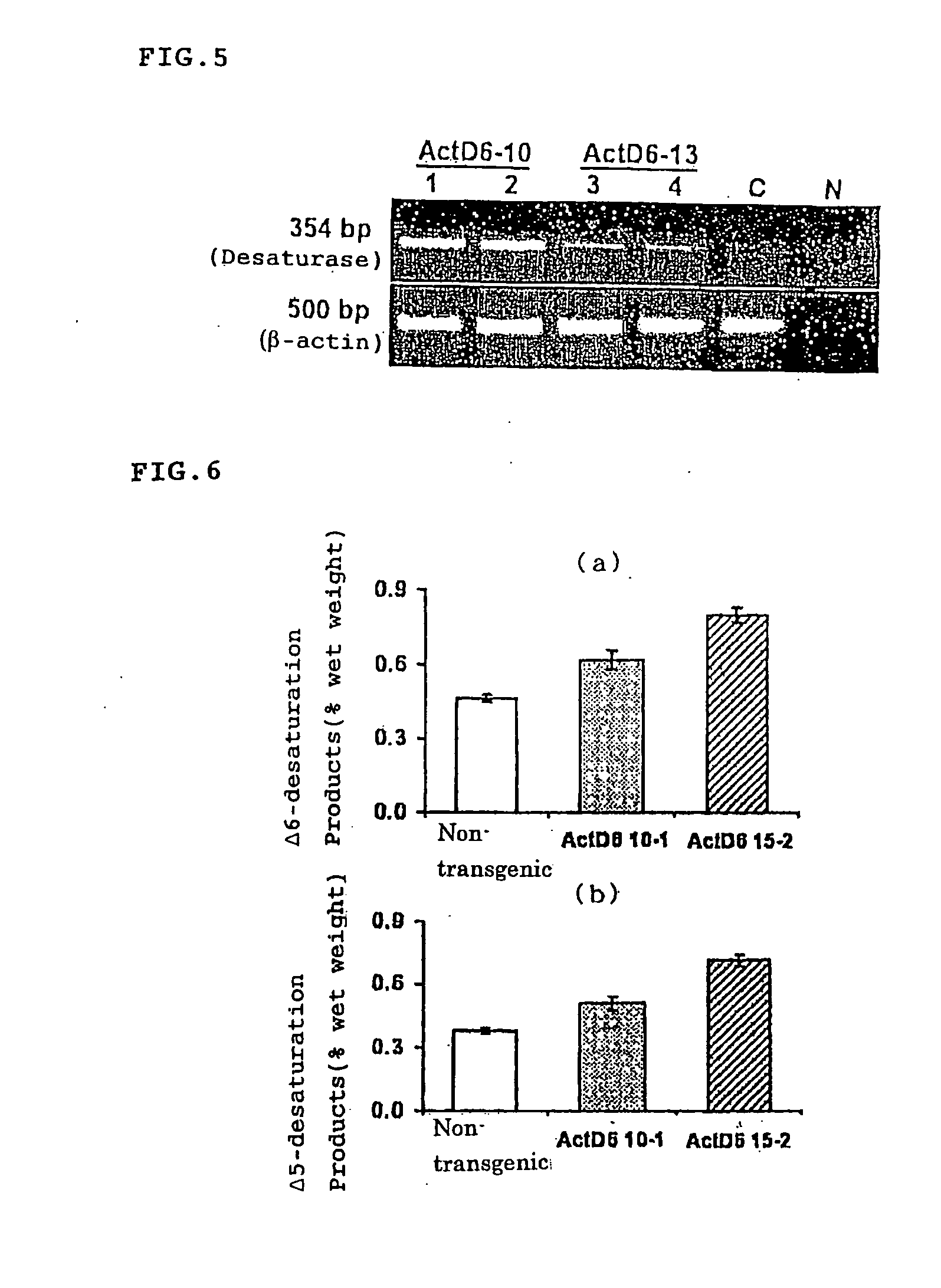Transgenic fish with increased unsaturated fatty acid content
a technology of unsaturated fatty acids and transgenic fish, which is applied in the field of fish with increased unsaturated fatty acid content, can solve the problems of increasing the quantity of raw materials for epa and dha production, the supply is expected to become critical, and the availability of raw materials has become increasingly scarce, so as to achieve low temperature, less expensive, and high vitality and a tolerance to handling
- Summary
- Abstract
- Description
- Claims
- Application Information
AI Technical Summary
Benefits of technology
Problems solved by technology
Method used
Image
Examples
example 1
Zebrafish Maintenance and Diets
[0084]The zebrafish used was AB strain (Walker et al., 1999). Fish were spawned and cultured as outlined by Westerfield (1995), with some modifications. Broodstock were raised in a 40-L aquaria under a photoperiod of 14 hours light and 10 hours dark at 28±1° C. Fish were fed on a commercial diet “otohime” (Nisshin Co.) and Artemia (Salt Creek Inc.) nauplii once daily, respectively. There were 4 aquariums for the broodstock, each containing 12 females and 8 males. These aquariums were divided into two groups, one group for spawning at 10:30 am and the other at 14:00 pm. This strategy allowed for microinjection to be carried out twice daily.
example 2
Cloning of Δ6 Desaturase cDNA
[0085]The Δ6-desaturase-like cDNA was isolated from the liver of yamame salmon by PCR with two degenerated primers designed according to the GenBank database (AB070444). The primers used were (5′-TACTCCATGGTTCAGCAAATGAATTGAACA-3′; SEQ ID NO: 3) and (5′-TCGTCCATGGCCATTCACTGCTGACAAGGA-3′; SEQ ID NO: 4) for forward and reverse, respectively, both containing NcoI site (underlined) to facilitate cloning into the expression vector. PCR amplifications were performed under the following conditions: 94° C. for 3 min, followed by 30 cycles of 30 sec at 94° C., 30 sec at 62° C., and 1.5 min at 72° C. The amplified product of 1680 bp was then subcloned into pGEM-T Easy vector (Promega).
example 3
Construction of Transgene Expression
[0086]The transgene expression was provided as an 8.5 kb plasmid pActD6 (FIG. 1). Briefly, the bovine growth hormone polyadenylation (BGH poly (A)) sequence was removed from the pRc / RSV (Invitrogen) by digestion with XhoI and ligated into pBluescript SK (+ / −) (Clontech). The 3.7 kb medaka β-actin promoter (mβ-Actin) was modified by PCR from pOBA-109 (Takagi et al., 1994) to provide an EcoRI site for ligation into pBluescript SK (+ / −) containing BGH poly (A). The 1477 kb Δ6-desaturase-like gene (D6D) of yamame salmon (O. masau) obtained from Example 2 was amplified by PCR with two oligonucleotide primers designed according to the GenBank database (AB070444). Using the forward primer “Sall-desF3” (5′-TTGTCGACGGTCTGAGTGGAGCAGAGAGAA-3′; SEQ ID NO: 5) containing a Sall recognition site (underlined), and the reverse primer “des-OmaR” (5′-ATCCAGGAAATGTCCTCTCTGTTCGCA-3′; SEQ ID NO: 6), PCR amplifications were performed under the following conditions: 94° ...
PUM
| Property | Measurement | Unit |
|---|---|---|
| Fraction | aaaaa | aaaaa |
| Fraction | aaaaa | aaaaa |
| Fraction | aaaaa | aaaaa |
Abstract
Description
Claims
Application Information
 Login to View More
Login to View More - R&D
- Intellectual Property
- Life Sciences
- Materials
- Tech Scout
- Unparalleled Data Quality
- Higher Quality Content
- 60% Fewer Hallucinations
Browse by: Latest US Patents, China's latest patents, Technical Efficacy Thesaurus, Application Domain, Technology Topic, Popular Technical Reports.
© 2025 PatSnap. All rights reserved.Legal|Privacy policy|Modern Slavery Act Transparency Statement|Sitemap|About US| Contact US: help@patsnap.com



